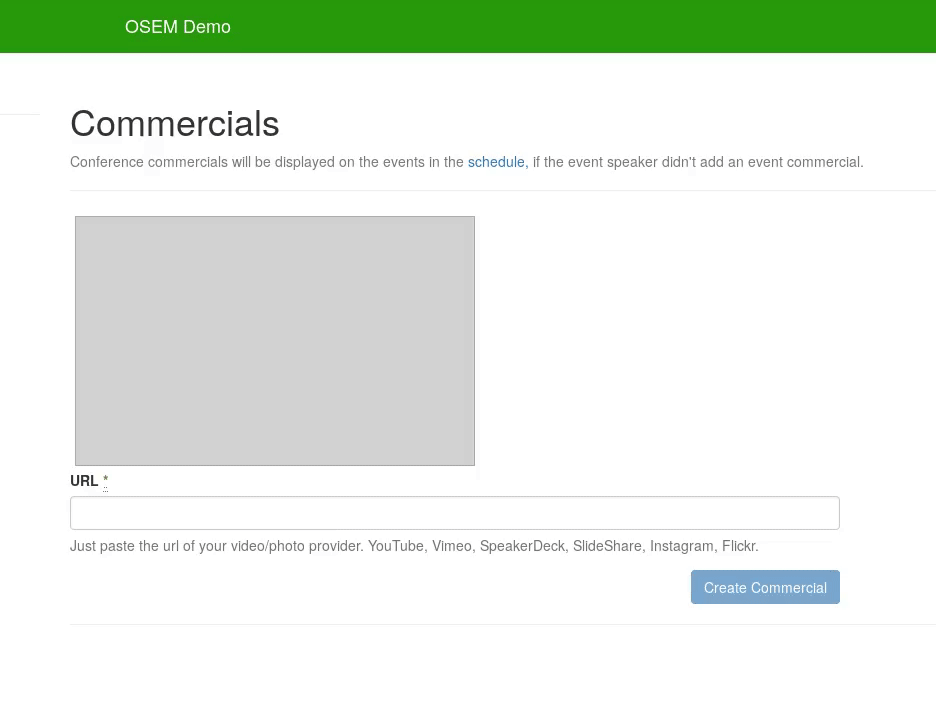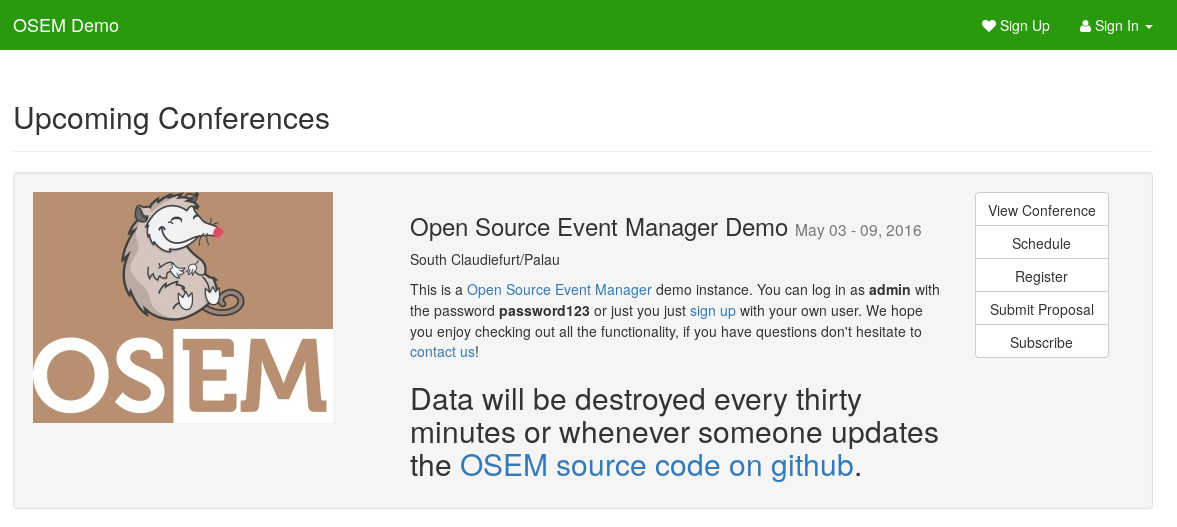Mind the gap between platform and app
published by
Henne
on
in
osem
Cover image: Mind the gap by Reinhard Dietrich licensed Public Domain
With the Open Source Event Manager (OSEM), one of the Ruby on Rails apps I hack on, we're heading down the road to version 1.0. A feature we absolutely wanted to have, before making this step, was an easy deployment to at least one of the many Platform as a Service (PaaS) providers. We deemed this important for two reasons:
- Before people commit to use your precious little app they want to try it. And this has to be hassle free.
- Getting your server operating system ready to deploy Ruby on Rails applications can be tedious, too tedious for some people.
So I have been working on making our app ready for Heroku which is currently the most popular PaaS provider for rails (is it?). This was an interesting road, this is my travelogue.
Storage in the public cloud
Storing files is incredibly easy in Rails, there are many ready made solutions for it like paperclip, dragonfly or carrierwave. The challenge with Heroku is, that on their free plan, your apps storage will be discarded the moment it is stopped or restarted. This happens for instance every time during a deployment or when the app goes to sleep because nobody is using it.
And even though it's easy to store files in Rails, we in the OSEM team have long discouraged this in our app. We rather try to make it as easy as possible to reference things you have shared somewhere else. Want to show a picture of your Events location? Use the ones you share on flickr or instagram anyway. Embed a video of a Talk? Just paste the Youtube or Vimeo link. Share the slides with your audience? Slideshare or Speakerdeck to the rescue!

OSEM commercials by Henne Vogelsang licensed CC BY 4.0
Still there are some places left in our app where we upload pictures. Pictures we think conference organizers are not necessarily free to share on other platforms, like sponsor logos or pictures of sponsored lodgings. So to be able to use OSEM on Heroku our file upload needed support for offloading the files to someone else's computer a.k.a. *the cloud*. In the end I have settled for the carrierwave plug in of cloudinary (pull request #970).
This means it's now as easy as configuring the cloudinary gem and making use of their free plan to shove off all the storage OSEM needs to them.
Storage was the first gap in OSEM that I closed, another piece of the puzzle was configuration.
Configuration in the environment
According to some clever people it's too easy to mistakenly check in your apps configuration file into your version control system. That's the reason your apps environment should provide all the settings. I'm not a big fan of putting stickers onto microwaves that say you can't use it to dry your cat. If people want to be stupid, let them.

But hey 12-Factor is a thing, let's roll with it! So in pull request #900 I removed all traces of OSEMs YAML configuration file and now all the settings happen in environment variables.
This was the second gap I had to close to be able to run our app on Heroku. Now all of the sudden things where falling into place and some very interesting things emerged for OSEM.
Continuous Deployment
One of the reasons I have gone down this road was to make it easy for people to try out OSEM. Now once you can run your app on Heroku you can also integrate your github repository and run a continuous deployment (every commit get's deployed right away). That made it possible for us to set up an OSEM demo instance for people to try which always runs the latest code. All we had to do is to make use of data from our test suite to populate the demo (pull request #982) and voila...

OSEM demo by Henne Vogelsang licensed CC BY 4.0
Continuous Review
So a continuous deployment of the latest code with some sample data. Does that sound useful for you as free software developer? I think being a free software developer first and foremost means collaborating with varying people from all over. People I work with on a daily basis and people who I never had contact with before. Collaboration mostly means reviewing each others changes to our code. It's pretty easy as we have rules and tools for that in place. What is not so easy is to do the same for changes to the functionality, the user experience design, of our app.
In the OSEM team we some times attach a series of screenshots or animated gifs to a github pull requests to convey changes to the user interaction and work flows, but this is usually no replacement for trying yourself. Then in the middle of me doing all of this Heroku Review Apps happened. Review apps are instant, disposable deployments of your app that spin up automatically with each pull request.

OSEM heroku pipeline by Henne Vogelsang licensed CC BY 4.0
Now, once someone sends a pull request where I want to review the user experience design I just press the 'Create Review App' button on Heroku and a minute later I get the a temporary instance populated with test data. Magic.
More things to come?
Another thing we might want to replace in the future is how we spin up developer instances. So far we use Vagrant which starts your OSEM checkout in a virtual machine. But nowadays you have to have docker containers in the mix right? Let's see what the future brings.
All in all, I must say, it was a nice trip into the Platform as a Service world. Surprisingly easy to do and even more surprisingly rewarding for the development work flow. What do you think?
Feedback?
Any criticism, remarks or praise about this post? Get in touch, I'm looking forward to your input!
